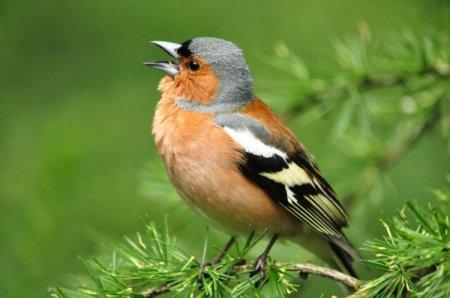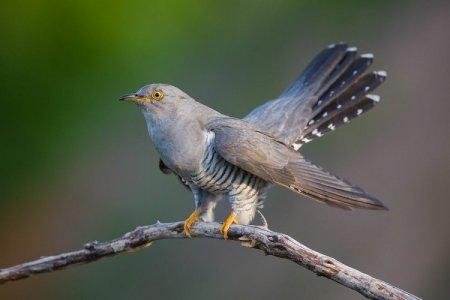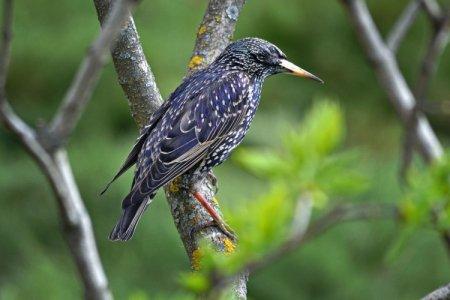
Almost everyone has heard about the charming Oriole, but only a few have seen it. And all because she prefers to hide in the forests in the dense crowns of trees. And her striking brightness does not prevent her from perfectly disguising herself and hiding her presence!
general description
A small but very bright oriole belongs to the passerine and is massively found in temperate latitudes. In structure, it resembles a starling, but you will never confuse them by color!
Oriole appearance
The oriole has a graceful elongated body up to 25 cm long and with a wingspan of up to 45 cm. Its yellow-black plumage immediately distinguishes it from all passerine brethren. Moreover, depending on the color of the head and tail feathers, several regional subspecies can be distinguished. The Oriole has a rather long reddish beak, and its round black eyes are also slightly reddish.

Male and female orioles: differences
The same black-and-yellow common oriole is the male. But the females are greenish, with a whitish belly and individual variegated feathers. Juveniles resemble females, but faded.

Singing
The Oriole has a very rich range of sounds that it can make. This is graceful singing, and a low melodic whistle, and harsh unpleasant sounds, reminiscent of cat cries. It's amazing how one bird can sound like a flute or the squeaky warnings of falcons.

How long does the Oriole live?
The life span depends very much on where and in what conditions she lives. On average, it ranges from 8 to 15 years. The most difficult is the first year, when young birds are still too inexperienced.

Flight
The flight path of the Oriole looks unusual. It seems that it moves in waves, but at the same time such a feature is difficult to track, because these birds rarely get out into the open. The average speed is about 40 km / h, but males develop up to 70 km.

Oriole species
Only common and Chinese orioles nest on the territory of Russia. But we want to show you some more interesting views!
Common oriole
If we are talking about the oriole in Russia, then this is it, because only it is common in regions with a temperate climate. Prefers a solitary lifestyle, and migrates to warmer regions for the winter.

Chinese black-headed oriole
In Russia, it is found in the Far East. It is distinguished by a long red beak, which stands out brightly against the background of yellow plumage with a black mask on its head.

Striped oriole
Quite large, up to 28 cm, with olive variegated plumage. This Australian bird prefers shady and humid eucalyptus forests.

Green-headed Oriole
The African species actively inhabit Tanzania and Kenya, but gradually the geography is becoming wider. It is a tropical bird with a matching color. The yellow abdomen passes over the green back.

Big-billed Oriole
In nature, it is a rare island species that cannot be found on any continent. It is a small bird, up to 22 cm, with a white belly, yellow undertail, dark wings and a pink beak.

Lifestyle
Orioles are very active and agile, but at the same time prefer a solitary lifestyle. Only by the mating season do they form pairs, and occasionally keep them for the whole year.
Oriole habitats
Orioles are massively distributed throughout Europe and most of Russia, except for the islands and the southern coast. Sometimes they can be found in the western regions of Asia. They live in light and tall deciduous forests, and spend their time at a height. Nowadays, the oriole can be found more and more often in parks and gardens.

The diet
Nothing unexpected: arboreal birds feed on arboreal insects. A strong strong beak helps to calmly catch them directly from branches and trunks. In addition, they love berries and fruits, and especially currants, cherries, grapes and pears. Very rarely, they can destroy the nests of small birds.

Wintering
European Orioles are forced to fly to warmer regions for the winter. They do not return immediately, but only to stable heat - already in May. First, males arrive and divide the territory for nesting.

Keeping in captivity
An adult bird will never get used to humans and will never become tame. Moreover, she may even die of hunger, because she will not touch suspicious food. But the chicks can be fed and tamed, but they are kept strictly one by one and in spacious light enclosures.
The oriole should not be constantly beating against the grate and other obstacles, because it has a very delicate plumage, which will not recover later. The temperature in winter should be at least 18 degrees.

Breeding orioles
Males attract females with their musical trills, and acquire a pair within a week. The female chooses a comfortable place for the nest at a fork in the branches higher from the ground. In shape and structure, this nest resembles a basket.
The female lays only 3-4 spotted eggs and incubates them herself. After about 2 weeks, babies appear. The Oriole is an attentive and caring mother, so at first it does not leave the offspring.
The male gets food alone, and the female flies out to hunt when the chicks get stronger. Parents look after the fledglings until they can fly normally.

Natural enemies
Orioles are very vulnerable to large birds of prey. They are often attacked by falcons, eagles, hawks and kites, especially during the nesting season, when the birds lose their vigilance. But thanks to the high location of the nests, they are protected from terrestrial predators.

Oriole - photo
The Oriole is not only a vocal, but also a very beautiful bird. Just look at her graceful proportions and bright plumage!


























